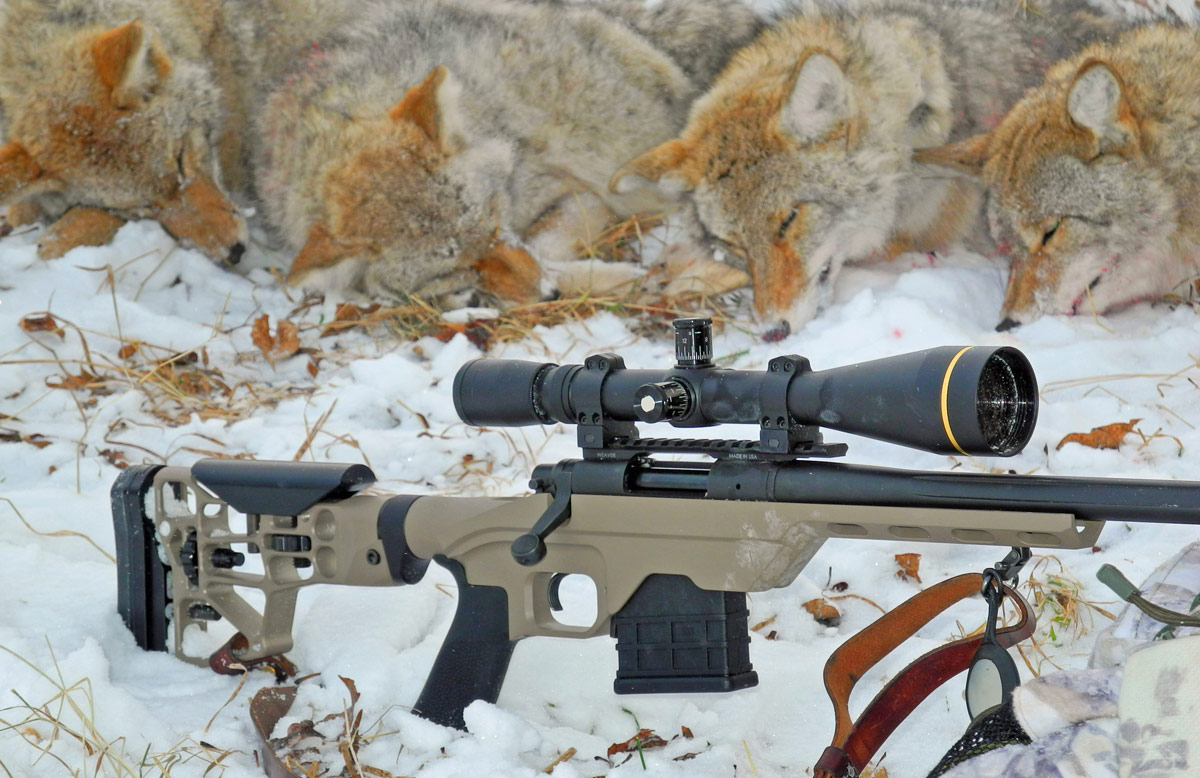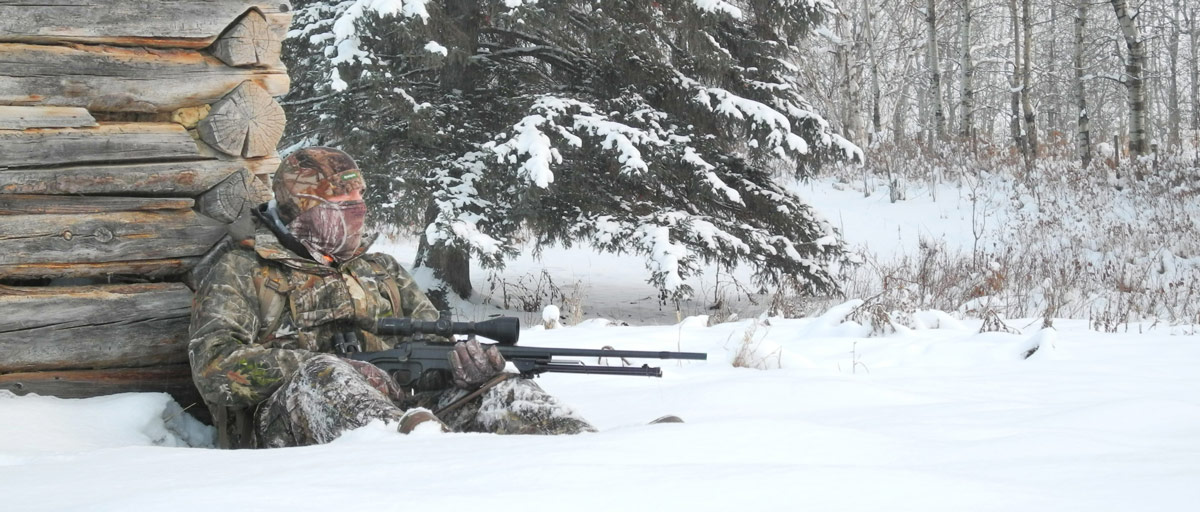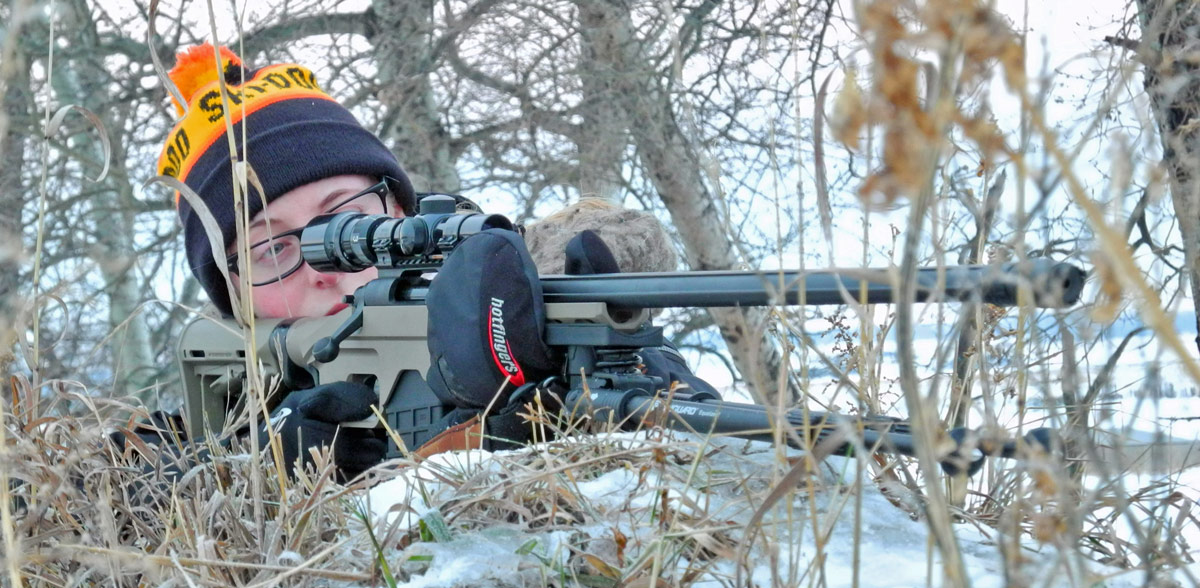Posted by Al Voth on 2022 Mar 18th
Predator Hunting with a Chassis Rifle
Predators inhabit most of North America. The coyote, in particular, is extremely widespread and thrives in urban, agricultural, and wooded or wilderness environments. Coyotes aggressively prey on both wildlife and domestic animals, and with fur prices falling, I'm concerned we'll soon have a dramatic overpopulation of the species. All of which means we predator hunters have some serious work to do.
Hunters need to deliver precise, ethical shots, so an accurate rifle with a properly fitted stock is necessary. The easiest way to accomplish this is to drop your favorite rifle into a chassis system. I have been hunting with chassis-equipped predator rifles for over a decade with much success. Let's look at why chassis rifles are great for predator hunting.
More: Accuracy Requirements for Predator Hunting
MAGAZINES
One of the biggest arguments for using a chassis system for predator hunting is the provision they all have for taking detachable magazines. It's one of my primary reasons for mounting every Remington 700 action I own into a chassis.
Detachable magazines are a godsend to the predator hunter because of their ability to quickly load and unload a rifle when arriving at a location to call or jumping in the truck to move to the next spot. An active day means doing upwards of 10 stands, which translates into 20 loading/unloading cycles. Fumbling with single cartridges in a fixed magazine becomes a huge pain, especially when the weather is cold and the fingers numb. A detachable magazine makes this necessary chore effortless by comparison.
More: Tips for Cold Weather Shooting
And if the chassis system takes AI pattern magazines, there's also the benefit of increased magazine capacity. I'll take a 10-round magazine over a 5-rounder any day when it comes to coyotes.

A ten-round magazine provides reassurance when four coyotes show up at a single stand, as they did here.
STABILITY
Predator hunting is often done in the coldest, harshest, climatic conditions, simply because that's when the fur is the most valuable. A rifle stock that is impervious to nasty environments will keep a rifle shooting accurately and to a constant point of aim.

Chassis like the MDT LSS shown here are among the toughest rifle stock options available.
PROPER FITMENT
The average wooden or synthetic rifle stock doesn't possess much in the way of adaptability, but this is a category owned by the chassis rifle stock. Depending on its design, the length-of-pull can be adjusted quickly and easily, as can comb height. That cold weather mentioned previously means heavy clothing for the hunter, and therefore the stock needs to be shortened for a proper fit. When the weather warms up, and lighter clothing is appropriate, it's a simple matter to lengthen the stock again.

To help this petite young lady harvest her first coyote, the author collapsed the adjustable stock to its shortest possible length. She sniped two from the edge of a cattle herd as a result.
CARRY OPTIONS
I particularly appreciate chassis rifles' number of options available to sling them for carrying. My situation is a good example, as a typical over-the-shoulder sling carry won't work with the pack system I use for predator hunting. My pack has a built-in seat, and the support legs for the backrest invariably bang against a rifle slung over the shoulder. However, chassis systems with push-button sling mounts on the sides of the buttstock and forend allow me to use a sling system that carries the rifle across the front of the body. It's flexibility conventional stocks don't allow.
ACCESSORIES
Additionally, the M-LOK slots many forends are equipped with allow a multitude of mounting options for all kinds of accessories, including bipods, which are a predator hunting necessity. I never leave home without a bipod, and chassis systems typically have many options for mounting one. Some hunters even like to carry a tripod equipped with a hog saddle into the field, and chassis rifles are ideal for this application. Personally, that's too much weight for me, but I can see the attraction, as it provides the ultimate stability for those long shots.
One accessory I regularly mount on my predator rifles and which the slots on the MDT HNT26 are ideal for is a squeeze-bulb mouse squeaker. Placing this bulb near where my support hand thumb naturally falls when tracking an incoming coyote provides an excellent option for finishing the deal on a wary predator.

Its lightweight and adjustable fit make the HNT26 chassis a predator hunter's dream.
All these factors make chassis systems ideal for hunters who want to deliver deadly precise, ethical shots at predators. And with the wide range of chassis options offered by MDT, there's a product line to meet every hunter's needs.
ABOUT THE AUTHOR
Al Voth calls himself a "student of the gun." Retired from a 35-year career in law enforcement, including nine years on an Emergency Response Team, he now works as an editor, freelance writer, and photographer, in addition to keeping active as a consultant in the field he most recently left behind—forensic firearm examination. He is a court-qualified expert in that forensic discipline, having worked in that capacity in three countries. These days, when he's not working, you'll likely find him hunting varmints and predators (the 4-legged variety).


 EUR
EUR
 Canadian Dollars
Canadian Dollars
